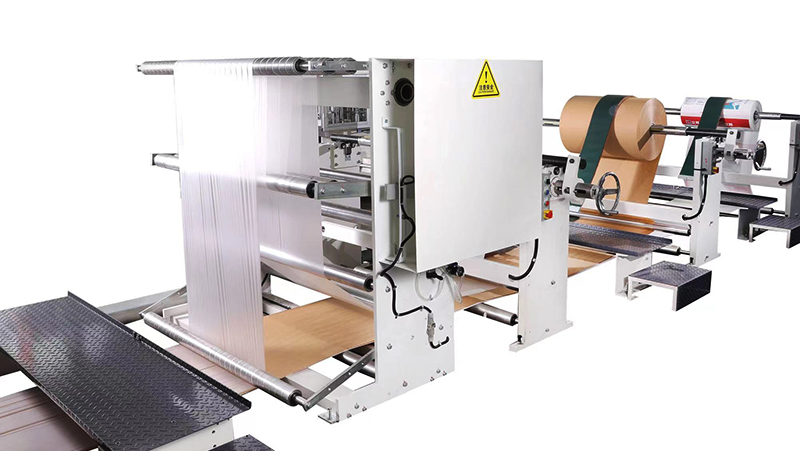Understanding the Factors Influencing Paper Bag Machine Prices
Release time:2025-05-23 Classification:Knowledge
The paper bag manufacturing industry has seen significant growth in recent years, driven by increasing demand for eco-friendly packaging solutions. As businesses and entrepreneurs explore opportunities in this sector, understanding the pricing dynamics of paper bag machines becomes essential. This article delves into the key factors that determine paper bag machine prices, offering insights to help buyers make informed decisions.

1. Machine Type and Production Capacity
Paper bag machines vary widely in design and functionality, directly impacting their costs. Basic models, such as manual or semi-automatic machines, are typically priced lower due to their limited output and simpler mechanisms. These units are suitable for small-scale operations or startups with modest production goals. On the other hand, fully automated, high-speed machines designed for large-scale manufacturing command higher prices. These advanced systems can produce thousands of bags per hour, integrate features like handle attachment or printing, and significantly reduce labor costs over time. Buyers must align their choice with production volume requirements to avoid overspending or underinvesting.
2. Automation Level and Technological Features
Automation is a major driver of paper bag machine prices. Semi-automatic models require manual intervention for tasks like feeding paper rolls or adjusting settings, making them more affordable but less efficient. Fully automated machines, equipped with PLC (Programmable Logic Controller) systems, sensors, and self-adjusting mechanisms, minimize human involvement while maximizing precision. Additional features—such as multi-layer bag production, custom handle configurations, or inline printing capabilities—further elevate costs. While these technologies improve output quality and speed, they also require a higher initial investment.
3. Material Compatibility and Durability
The construction quality of a paper bag machine plays a critical role in its pricing. Machines built with premium-grade steel, corrosion-resistant components, and precision-engineered parts tend to last longer and perform more reliably, justifying their higher price tags. Additionally, compatibility with diverse materials—such as recycled paper, kraft paper, or laminated sheets—can influence costs. Machines capable of handling thicker or specialty papers often incorporate reinforced feeding systems and cutting tools, adding to their complexity and value.
4. Energy Efficiency and Operational Costs
Modern buyers increasingly prioritize energy-efficient machinery to reduce long-term operational expenses. Paper bag machines with optimized power consumption, heat recovery systems, or low-waste designs may carry a premium upfront cost but offer substantial savings over their lifecycle. Conversely, older or less efficient models might seem economical initially but could lead to higher electricity bills and maintenance fees. Evaluating the total cost of ownership—rather than just the purchase price—is crucial for budget planning.
5. Customization and After-Sales Support
Custom-built machines tailored to specific bag dimensions, handle types, or printing requirements often incur additional costs compared to standard models. However, customization ensures the machine meets exact production needs, enhancing ROI for niche markets. Equally important is the availability of after-sales services, such as technical support, spare parts supply, and warranty coverage. Suppliers offering comprehensive service packages may price their machines higher, but this investment safeguards against downtime and repair hassles.
6. Market Trends and Regional Variations
Global supply chain dynamics, raw material costs, and regional demand fluctuations also affect paper bag machine prices. For instance, markets with stringent environmental regulations may see higher demand for advanced, eco-compliant machinery, driving up costs. Additionally, import duties, shipping fees, and local taxes can create price disparities between regions. Buyers should research market conditions and consider sourcing options—such as local manufacturers versus international suppliers—to identify cost-effective opportunities.
7. New vs. Refurbished Machines
Budget-conscious buyers often explore refurbished paper bag machines as a lower-cost alternative. While these units are reconditioned to functional standards, their prices depend on factors like age, previous usage, and component upgrades. New machines, though more expensive, come with the latest technology, full warranties, and guaranteed performance. Weighing the pros and cons of both options is vital, especially for businesses prioritizing reliability.
The price of a paper bag machine is shaped by a combination of technical specifications, production needs, and market forces. By carefully assessing factors such as automation, durability, energy efficiency, and supplier support, buyers can identify a machine that balances upfront costs with long-term benefits. As sustainability trends continue to reshape packaging industries, investing in the right equipment will remain a strategic decision for businesses aiming to thrive in this competitive landscape. Conducting thorough research, requesting detailed quotations, and consulting industry experts are recommended steps to navigate the complexities of paper bag machine procurement.






